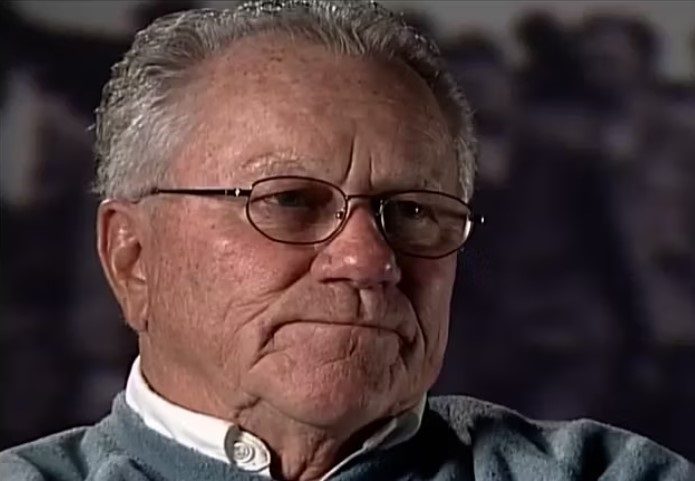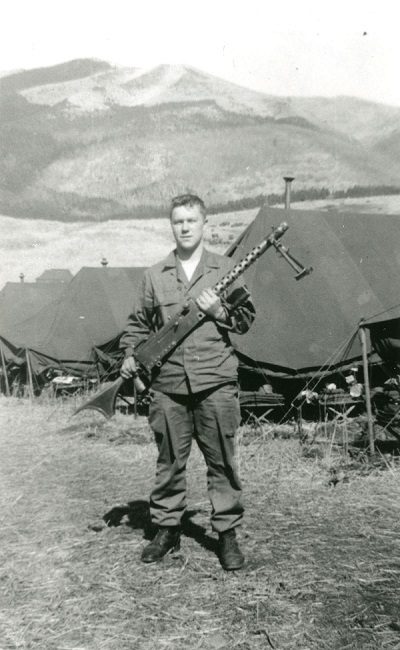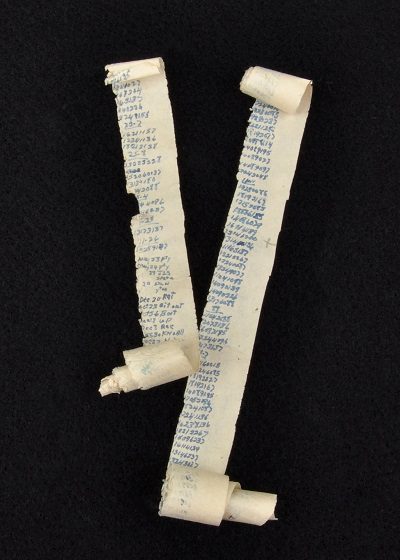
On July 27, 1953, an armistice was signed that began a ceasefire between North Korea and South Korea, although occasional hostilities flare between the two countries continue to this day. While this declaration of ceasefire was not a formal end to the war, it marks an important day in which Operation Big Switch commenced, bringing home hundreds of American POWs that remained in captivity in North Korea.
For the 70th anniversary of the signing of the armistice, we recall Darrell Krenz and his experiences as a prisoner of war and being freed following the armistice.

Photo of Darrell Krenz. WVM.TR1117.
Darrell Krenz, a McFarland, Wisconsin native, enlisted in the United States Army at the age of seventeen and began his service. He opted to serve overseas and spent fourteen months in Japan, where he turned eighteen. In July 1950, Krenz was sent to South Korea shortly after the outbreak of the Korean War. He was part of Task Force Smith, a unit comprised of some of the very first troops to be sent to Korea. Shortly after his arrival, Krenz experienced heavy combat as a participant in the Battle of Taejon. He recalled losing most of the men in his company and fighting back as a trained sniper and bazooka operator. Less than a month later, he and the remaining survivors of his company were captured by the North Koreans and taken prisoner.
Krenz spent three years as a prisoner of war, surviving the Tiger Death March where hundreds of his fellow soldiers died before even reaching the North Korean prison camps. During his imprisonment, Krenz recalled being fed very little, experiencing harsh cold temperatures, being beat by guards, and witnessing his fellow soldiers die beside him every day. After fourteen months, the prisoners were put into the charge of the Chinese, who fed them unlimited rice but forced all prisoners to consume communist propaganda every day.
The Chinese also allowed Krenz paper and pencils to write letters home. Using these materials, Krenz developed a number code that allowed him to secretly write down the names of dead soldiers and American prisoners who were cooperating with the Chinese by giving up fellow soldiers in exchange for things like cigarettes.
In April 1953, Operation Little Switch began, coinciding with armistice negotiations resuming at Panmunjom. The operation called for each side to begin returning wounded and sick soldiers. Krenz witnessed some prisoners leave his camp, but he wouldn’t be one of them. It wasn’t until the signing of the armistice in July 1953 that Operation Big Switch commenced, which began the return of all prisoners of war to their home countries.

Coded list written by Krenz at POW camp. WVM.TR1117.
In the following video clip, Krenz remembers the end of his imprisonment and returning home after the armistice.
INTERVIEWER: How did you find out when something like Little Switch came along? Did they just call everybody together?
KRENZ: Yeah. Got us together and put us on trucks and we were going down-- well, it was quite a ways away. And we had overnight and all that. And then during the morning, one morning, we were going down the road and we only had the back of it open a little bit where we could see once in a while. We kept seeing something laying alongside the road all the time, but we just couldn't-- the guards, two guards right there, they wouldn't let us do much. So, all of a sudden, the guard lifted up the thing. We're still going and we're going across this big bridge and all kinds of flags across the bridge and all of a sudden there's American flags. Then we knew. Then we knew we were home. So, what was laying alongside the road, the guys are all taking these cotton padded uniforms and throw 'em away. They didn't want nothing to do with them anymore.
INTERVIEWER: So really, you didn't know when you got in the trucks where you were going?
KRENZ: No. So, I jumped because the flap went up, of course. And then a couple of Marines came over. I guess they were Marines at that time. I said they were. I can't quite remember now, but they said, "C'mon. We'll help you off the truck." I says, "I don't need your help." You know, I still got some pride in me, you know. And I jumped off the truck and went on my face. I didn't think-- I thought I was stronger than I was. And I looked over there and I seen the American flag and I couldn't-- I went over there and I just-- I put my arms around that pole, and I could hardly keep control of myself at all. I just hung on to that thing. Pretty soon the officer come over and says, "Come on now, you're-- son, you're home now." I says, "Okay. Home." So, they put me in a hospital there-- I guess it was Seoul at that time. I think we had taken that back. They had a little hospital there. I was there for a couple of days and then I-- they took us by helicopter over to Tokyo General. I had a problem with-- they thought I had something-- my chest [inaudible] were bad. I couldn't breathe good, and I had-- my ears were all plugged. So, I got to fly home in a special pressurized home-- airplane, you know. So, anyway, then I got home, finally. I got discharged in November of '53, November 11th, in fact. Veterans Day.
Krenz spent roughly 1,100 days as a prisoner of war. After returning to Wisconsin, Krenz worked with various companies, all while experiencing different physical and mental health problems related to his time in the service.
The full interview is available here by clicking on here or image below.


